Who is the blogger?
SNAM Video Trailer Collection Alphabetical Listing
Video Trailers from picks on TVOntario's Saturday Night at the Movies
Panic in the Streets (1950)
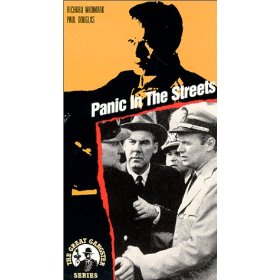 “Panic in the Streets” (1950) starring Richard Widmark and Jack Palance as directed by Elia Kazan, makes for a scary combination. I’m not sure which one you should take your chances on; the menace of the totally deadly pneumonic plague (a form of the Black Plague) or the totally creepy Jack Palance as the villain. The hero, Richard Widmark, as Lieutenant Commander Clint Reed, runs around New Orleans with his syringe, prepared to do battle with either culprit. (Apparently, it is true that the totally deadly effects of pneumonic plague can be forestalled with a dose of antibiotics within 24 hours.) This highly potent concoction of gangsters, bioterrorism, post-war anxieties with a bit of romance thrown in, thanks to Barbara Bel Geddes as the good doctor’s wife, makes it a highly watchable film more than 50 years later.
“Panic in the Streets” (1950) starring Richard Widmark and Jack Palance as directed by Elia Kazan, makes for a scary combination. I’m not sure which one you should take your chances on; the menace of the totally deadly pneumonic plague (a form of the Black Plague) or the totally creepy Jack Palance as the villain. The hero, Richard Widmark, as Lieutenant Commander Clint Reed, runs around New Orleans with his syringe, prepared to do battle with either culprit. (Apparently, it is true that the totally deadly effects of pneumonic plague can be forestalled with a dose of antibiotics within 24 hours.) This highly potent concoction of gangsters, bioterrorism, post-war anxieties with a bit of romance thrown in, thanks to Barbara Bel Geddes as the good doctor’s wife, makes it a highly watchable film more than 50 years later.  It may not be Elia Kazan’s best film ever, but it’s worth a look. And it’s so comforting in this crazy post-SARS world of ours to think that there is some nice, upstanding medical man out there who has everything under control with his syringe, if he could just get all those nasty miscreants rounded up.
It may not be Elia Kazan’s best film ever, but it’s worth a look. And it’s so comforting in this crazy post-SARS world of ours to think that there is some nice, upstanding medical man out there who has everything under control with his syringe, if he could just get all those nasty miscreants rounded up.
<<Back to Midnight Oil main journal
>>On to "Who's Directing Your Life?"
Are you ready to "roll up your sleeve"? See the video excerpt from "Panic in the Streets" (1950)
Places in the Heart (1984)
 In “Places in the Heart” (1984), writer/director Robert Benton delivers a poignant portrait of a way of life as it once was in the deep South during the Depression era. Edna Spalding (played by Sally Field) finds herself in an unexpected place, facing life as a widow with two young children after her husband is suddenly killed. Edna seems to represent many women of her
In “Places in the Heart” (1984), writer/director Robert Benton delivers a poignant portrait of a way of life as it once was in the deep South during the Depression era. Edna Spalding (played by Sally Field) finds herself in an unexpected place, facing life as a widow with two young children after her husband is suddenly killed. Edna seems to represent many women of her  generation. She is ill-prepared to deal with the harsh realities of being a single parent in what is still very much a man’s world. She doesn’t even know how to write out a cheque, much less run a farm and earn a living. Sally Field’s character demonstrates courage, warmth and toughness in the face of overwhelming odds as she attempts to
generation. She is ill-prepared to deal with the harsh realities of being a single parent in what is still very much a man’s world. She doesn’t even know how to write out a cheque, much less run a farm and earn a living. Sally Field’s character demonstrates courage, warmth and toughness in the face of overwhelming odds as she attempts to 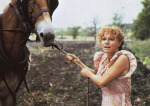 keep her family together during a deep economic and personal crisis.
keep her family together during a deep economic and personal crisis.
Danny Glover’s portrayal of the character Moze, a migrant worker who ends up helping Edna to work the farm and bring in the cotton, captures the essence 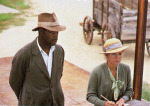 of the situation of the black man in this period of time. Moze searches not only for work to keep body and soul together, but for dignity to make life worth living. He finds both for just a moment with Mizz Spalding on a little farm just outside of the small town of Waxahachie, Texas.
of the situation of the black man in this period of time. Moze searches not only for work to keep body and soul together, but for dignity to make life worth living. He finds both for just a moment with Mizz Spalding on a little farm just outside of the small town of Waxahachie, Texas.
 John Malkovich plays Mr. Will, a complicated character whose injuries from the First Great War involve more than just the loss of his eyesight. As a boarder in the household, Mr. Will temporarily finds a place to belong and a group of people who need him almost as much as he needs to be needed.
John Malkovich plays Mr. Will, a complicated character whose injuries from the First Great War involve more than just the loss of his eyesight. As a boarder in the household, Mr. Will temporarily finds a place to belong and a group of people who need him almost as much as he needs to be needed.
Benton frames his semi-autobiographical work with bookends in the form of two hymns that open and close the film. (See below) These scenes set up a  context for understanding the rest of the action of the film. As with the folksy irregular rhythm of the cotton pickin’ ballads in the middle of the movie, the music comes out of the real life experiences of the townspeople. The music is presented as something that’s a part of what the people here really live. It’s not just an ornamental backdrop for the dramatic action.
context for understanding the rest of the action of the film. As with the folksy irregular rhythm of the cotton pickin’ ballads in the middle of the movie, the music comes out of the real life experiences of the townspeople. The music is presented as something that’s a part of what the people here really live. It’s not just an ornamental backdrop for the dramatic action.
The final scene with the communion in church raises particular issues. Everything else in the film has been firmly anchored in reality until the final frames of the film. Why is it that unreality suddenly takes over? Edna’s dead husband and his killer, the young black man, who was brutally killed by a lynch mob, suddenly appear sitting in church. Sitting there in the pew, they seem as normal as every other member of the community as the communion plate is passed. My thought is that it has to do with what  Robert Benton wants to show us about his main characters and the community they live in. “Places in the Heart” may be a memory of a place and a time that no longer exist. The magic in it is that Benton manages to help us to understand something of what it was like to live there and then, just as he lived it.
Robert Benton wants to show us about his main characters and the community they live in. “Places in the Heart” may be a memory of a place and a time that no longer exist. The magic in it is that Benton manages to help us to understand something of what it was like to live there and then, just as he lived it.
See the TVO Saturday Night at the Movies in depth Interviews as the subject of "Surviving the Depression" is treated in two films shown on SNAM: "Places in the Heart" (1984) and "Pennies from Heaven"(1981).
>>Real Life: Everything in life seemed to be going fine. That all changed the day Tamara learned she had incurable cancer and was faced with only a few uncertain years to live. Where do you turn when confronted with a no-win situation?
>>More to see: Looking for more out of life?
See the framing opening and closing scenes with accompanying music from "Places in the Heart".
Priest (1994)
 “Priest” (1994) is a difficult movie tackling a difficult subject. It holds up for scrutiny the many conflicts of being a modern-day Roman Catholic priest. Upon arrival at his new parish, Father Pilkington (Linus Roache) quickly becomes embroiled in a series of no-win situations. His fellow priest (Tom Wilkinson) is
“Priest” (1994) is a difficult movie tackling a difficult subject. It holds up for scrutiny the many conflicts of being a modern-day Roman Catholic priest. Upon arrival at his new parish, Father Pilkington (Linus Roache) quickly becomes embroiled in a series of no-win situations. His fellow priest (Tom Wilkinson) is 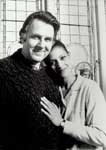 having a clandestine affair with the maid; a young parishioner reveals while in the confessional that she is the victim of incest; and he himself is caught in compromising circumstances in an ongoing homosexual relationship. The ready answers of Father Greg’s conservative version of Roman Catholic faith appear to be no match for the very real problems of real life in his very ordinary English parish. A crisis of faith ensues for Father Greg. His fellow clergy and the parish in general are dragged along unwittingly and unwillingly.
having a clandestine affair with the maid; a young parishioner reveals while in the confessional that she is the victim of incest; and he himself is caught in compromising circumstances in an ongoing homosexual relationship. The ready answers of Father Greg’s conservative version of Roman Catholic faith appear to be no match for the very real problems of real life in his very ordinary English parish. A crisis of faith ensues for Father Greg. His fellow clergy and the parish in general are dragged along unwittingly and unwillingly.
Although most of the crises in the film revolve around the 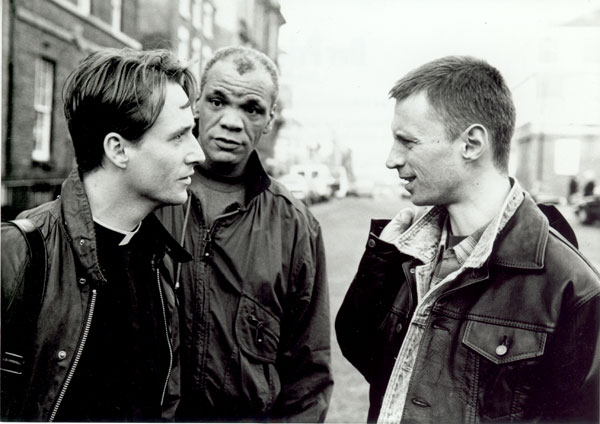 depiction of a mangled sexuality, on a more global level, the sex is just a window through which to see more deeply into the soul, into what it means to be human. In spite of the brouhaha that the film engendered when originally released, this film endures in its
depiction of a mangled sexuality, on a more global level, the sex is just a window through which to see more deeply into the soul, into what it means to be human. In spite of the brouhaha that the film engendered when originally released, this film endures in its  unflinching look at a certain situation in the Church today. That being said, the film is not totally devoid of either the hope or the redemption that the Church is supposed to be famous for. Like the rest of what is depicted in the film, it’s just not that simple.
unflinching look at a certain situation in the Church today. That being said, the film is not totally devoid of either the hope or the redemption that the Church is supposed to be famous for. Like the rest of what is depicted in the film, it’s just not that simple.
Also shown on Saturday Night at the Movies was another film underscoring high drama resulting from the secrecy of the confessional, Alfred Hitchcock’s “I Confess”.
>>More to see: Looking for more out of life?
See the video trailer for "Priest" (1994). See also the climactic final scene of the movie here.
Shenandoah (1965)
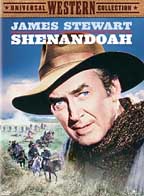 “Shenandoah” (1965) IMDb with James Stewart playing the lead role provides a less than usual perspective on the American Civil War. The film tells the story of a well ensconced Virginian farming family caught up in the latter part of the Civil War. Stewart, as Charlie Anderson, vehiculates a pragmatic pacificism about a mean and dirty war that now encroaches on his land and his family. Anderson himself is not undergirded by a particularly robust morality about the war nor about his position on pacificism. He finds himself fighting a losing battle even though he technically remains “out of the war”.
“Shenandoah” (1965) IMDb with James Stewart playing the lead role provides a less than usual perspective on the American Civil War. The film tells the story of a well ensconced Virginian farming family caught up in the latter part of the Civil War. Stewart, as Charlie Anderson, vehiculates a pragmatic pacificism about a mean and dirty war that now encroaches on his land and his family. Anderson himself is not undergirded by a particularly robust morality about the war nor about his position on pacificism. He finds himself fighting a losing battle even though he technically remains “out of the war”.
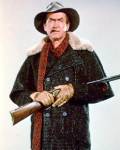 The Uncivil War episode offered by Saturday Night at the Movies pairs “Ride with the Devil” (1995) IMDb with this movie classic from 1965. SNAM’s interviewed guests bring out the relationship of “Shenandoah” with American sentiments of the day concerning young American men snatched up into the war in Vietnam and the accompanying anger, confusion and sense of helplessness on the part of those at home.
The Uncivil War episode offered by Saturday Night at the Movies pairs “Ride with the Devil” (1995) IMDb with this movie classic from 1965. SNAM’s interviewed guests bring out the relationship of “Shenandoah” with American sentiments of the day concerning young American men snatched up into the war in Vietnam and the accompanying anger, confusion and sense of helplessness on the part of those at home.
<<Back to Midnight Oil >>On to "Who's Directing Your Life?"
See the SNAM preview for The Uncivil War here. Dig in to the background for the films through the Interviews on The Uncivil War with experts on the period.
Catch the video trailer for “Shenandoah” (1965) here.
visit videodetective.com for more info
Shine (1996)
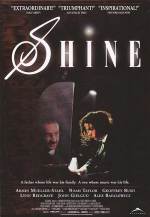 “Shine”(1996) IMDb tells the story of Australian pianist, David Helfgott, a man whose artistic talents and fragile mental state are negatively impacted by the post-war trauma of his troubled father. Helfgott makes an unlikely comeback after a dramatic mental breakdown and institutionalization. Geoffrey Rush (adult) and Noah Taylor (adolescent) both won critical acclaim for their portrayal of Helfgott’s character. While the issue of whether “Shine” tells the “entirely true” story of the child prodigy gone wrong may be debatable, what is clear is that this film certainly
“Shine”(1996) IMDb tells the story of Australian pianist, David Helfgott, a man whose artistic talents and fragile mental state are negatively impacted by the post-war trauma of his troubled father. Helfgott makes an unlikely comeback after a dramatic mental breakdown and institutionalization. Geoffrey Rush (adult) and Noah Taylor (adolescent) both won critical acclaim for their portrayal of Helfgott’s character. While the issue of whether “Shine” tells the “entirely true” story of the child prodigy gone wrong may be debatable, what is clear is that this film certainly  is a good story worth listening to in its empathetic treatment of the individual and the artist.
is a good story worth listening to in its empathetic treatment of the individual and the artist.
The film “Shine”(1996) was presented in the context of TVOntario’s “Brain Week – From Brilliant to Broken” . Be sure to catch the SNAM Interviews for “Shine” called “Art and Madness”, a most interesting examination of the relationship of mental illness and artistic genius as depicted in film.
<<Back to Midnight Oil main journal
>>On to "Who's Directing Your Life?"
See the video trailer for “Shine”(1996)




